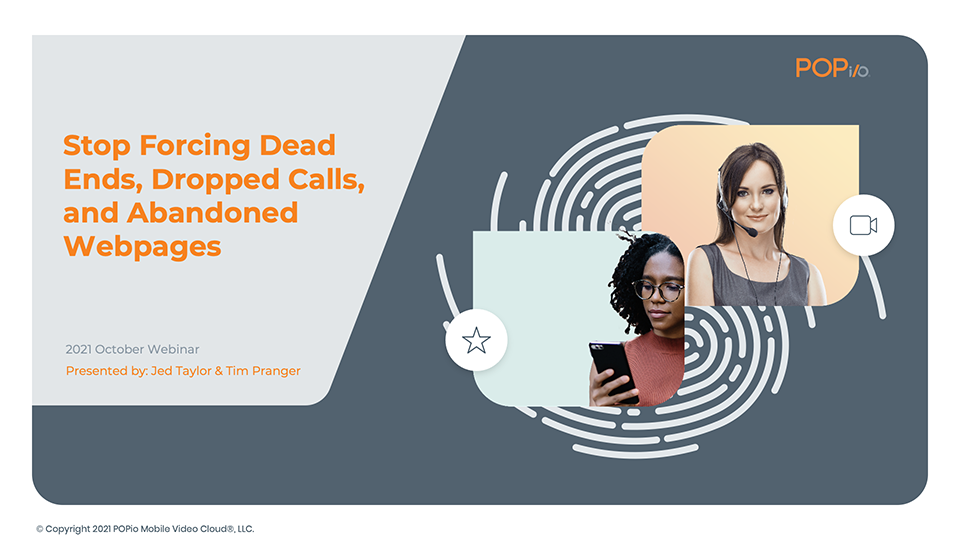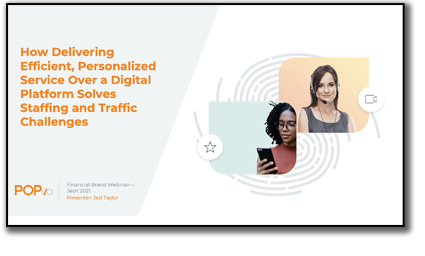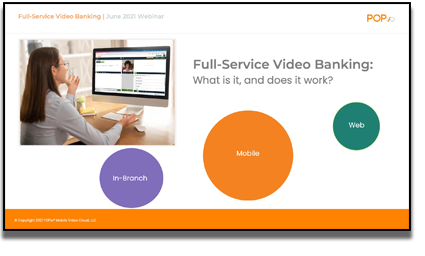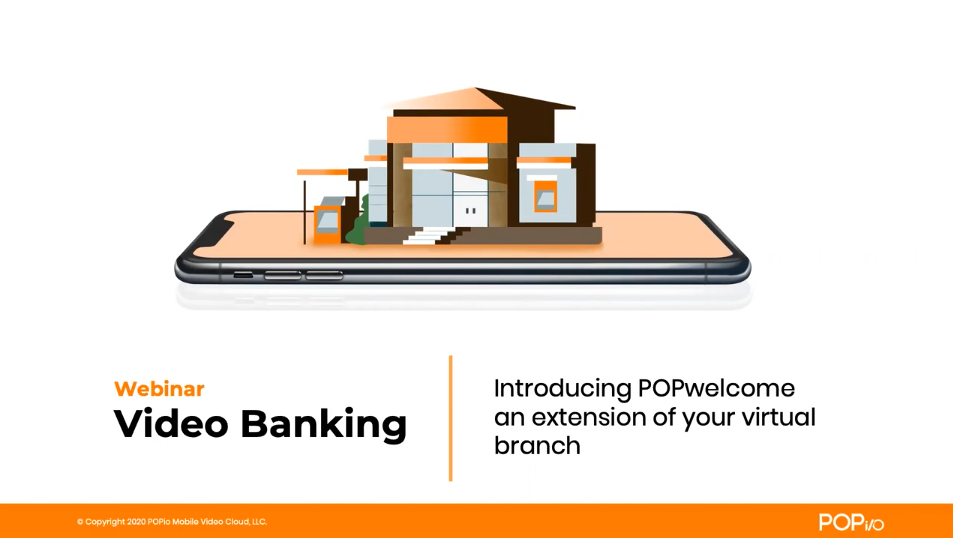A closer look at the reasons for dead ends and abandonment in today’s digital banking services.
Well if that isn’t a captivating subtitle, I don’t know what is. But behind that statement is a real—and in some cases, dire—fact of digital banking services: Some of them don’t work.
Users begin processes on their phones and tablets, only to leave them incomplete. They run into snags or are told they have to visit a branch in order to proceed. So they close the app or the webpage, and leave the transaction unfinished.
Meanwhile, other digital services are able to provide the convenience and support needed to create a successful customer outcome. They give the user a host of quick and easy solutions, while also offering the full capabilities of a branch visit.
So, what does it take to make the cut? Why do some digital services outperform others? And why are digital banking services so important anyway? In this blog, we’ll take a closer look at what’s needed to offer a satisfying experience to today’s digital consumer.
Great Expectations
Meeting consumer needs has always been a challenge for businesses. And with the recent growth and disruption of emerging technology, providing customers with satisfying experiences has become something like trying to hit a moving target.
Then, as if the situation wasn’t already complicated enough, the COVID-19 pandemic struck, profoundly affecting the standards consumers had for digital experiences. With many in-person transactions, services, and experiences shut down, consumers shifted their reliance to digital outlets. This meant that many businesses had to quickly and effectively provide a digital infrastructure to their customers.
But now digital services have become a prominent feature in the lives of many users. People have become adept at navigating various kinds of digital experiences. Because of this increase in digital adoption and user proficiency, people no longer tolerate an inefficient, frustrating user experience. They want services to be fast and comprehensive, they want their needs to be understood, and they want clear, navigable pathways to whatever they’re trying to accomplish.
After years of being well-versed in streamlined apps and online services, the average consumer has little patience for frustrations and roadblocks in the online world.
Robot Rage
One area where these frustrations crop up is with chatbots. These tools, along with AI, automation, and self-service channels, can anger the customer, failing to understand their need, and offering no through-line to human assistance when requested.
In banking, chatbots, AI, and self-service channels may be excellent tools for simple, high-frequency interactions. But when these limited services are all a customer is offered, they can be made to feel like their FI doesn’t value them as a customer, that it doesn’t want to provide them with a solution to their problem.
Forbes noted in an article that though chatbots are being offered by an ever-increasing number of banks and credit unions, they continue to lead to fewer happy customers. Research shows that 22% of chatbot experiences lead to customers being “frustrated”, and a further 11% led to them being “angry”.
These sour experiences can erode brand loyalty, which is leading to many customers leaving their FI’s for more technologically-adept ones. This act of leaving one’s institution for another is called “customer churn”, and in the next few years, it’s expected to hit an all-time high. According to Foresight Research, the pandemic created a “hot spot of churn”. They found that customer churn increased from 12% to 22%, and is still on the rise. At some banks, it’s gotten as high as 27%, making it increasingly clear that effective digital services have become a vital aspect of customer retention.
To many FI’s, this statistic should be a canary in a coal mine. The proliferation of digital services is not a trend, it’s a shift. And the businesses that don’t adapt to it will always run the risk of being left behind.
Don’t Settle for Dead Ends
Satisfying the digital consumer may seem like a daunting endeavor. Many FI’s are left wondering what digital services to implement, or whether the digital tools they have will still be relevant a few years from now.
But the best advice, as offered by Forbes and other outlets, is to provide a host of services, allowing users to find the appropriate level of assistance for their needs. The goal for any business in this position is to eliminate dead ends from their customers’ digital journey. If one particular point is causing hang-ups, frustrations, or high abandonment rates, it should be rethought to offer a more efficient and comprehensive pathway for the customer.
This idea especially applies to the services that banks and credit unions typically perform in branches. Applying for loans, opening new accounts, and speaking with experts about mortgages and investments are just a few examples of tasks that users struggle to complete through digital self-service channels.
According to Jim Marous, publisher of the Digital Banking Report, the baseline abandonment rate for online users opening new accounts through self-service channels is 19%, and at some FI’s it’s as high as 75-80%. Furthermore, Javelin Research found that only 8% of mobile users seeking to open a new account were able to complete the process on their phones.
What’s the Solution?
For services like these, users are calling for a “mayday” button—a direct connection to the expertise they need to complete their desired task. This option seamlessly elevates the customer from the chatbot, self-service, or call-center roadblock that they’re facing, and puts them in touch with the banking professional they need to effectively resolve their issue.
Especially helpful for loans, new account openings, and other operations that comprise the majority of a typical FI’s revenue stream, this personalized, human-to-human service improves brand loyalty and digital satisfaction.
It can be delivered over chat, voice, or collaborative video, giving users a satisfying digital alternative to the in-branch experience, and giving your FI a proven way to operate efficiently in the digital space.
At POPi/o, we know it can be tough to keep up with the changing demands of consumers. But finding an effective digital solution doesn’t have to be an arduous task. We’re here to help you discover and explore new options for managing customer relationships, because we know there’s nothing more important to you than being there for the people you serve.
If you’d like to learn more about the POPi/o Digital Communications platform, schedule a demo today.











